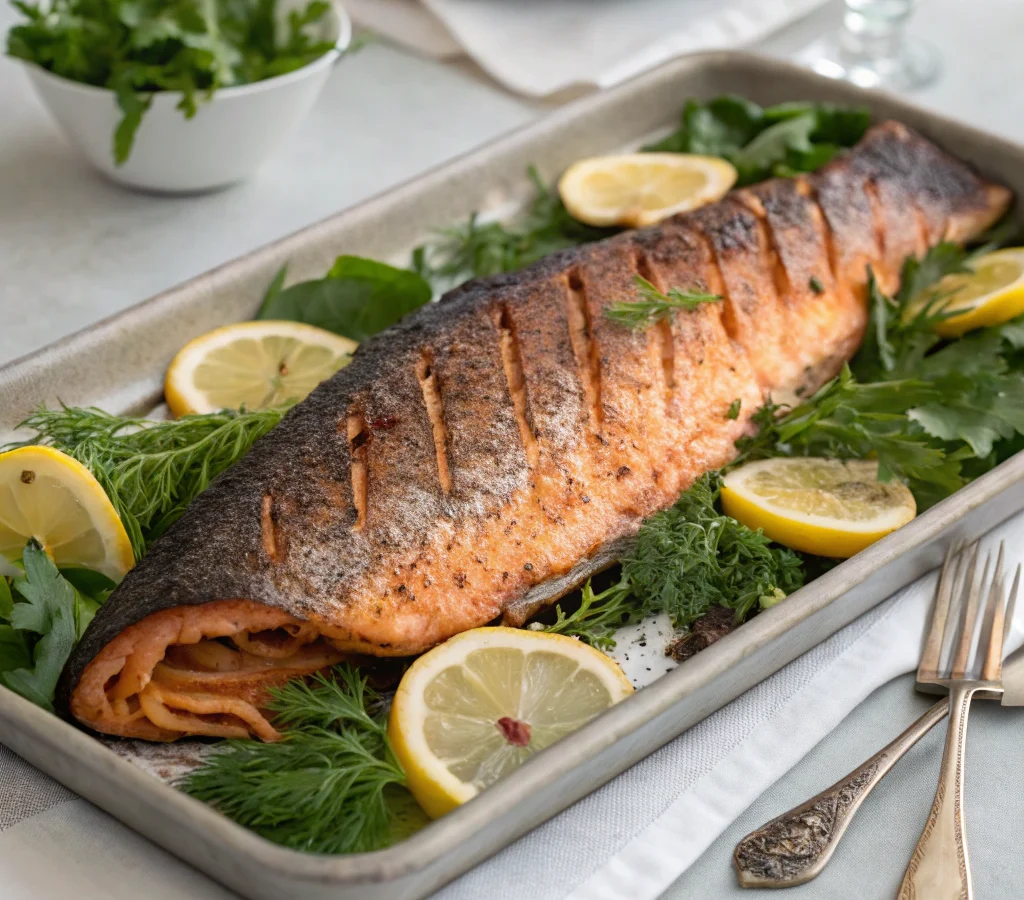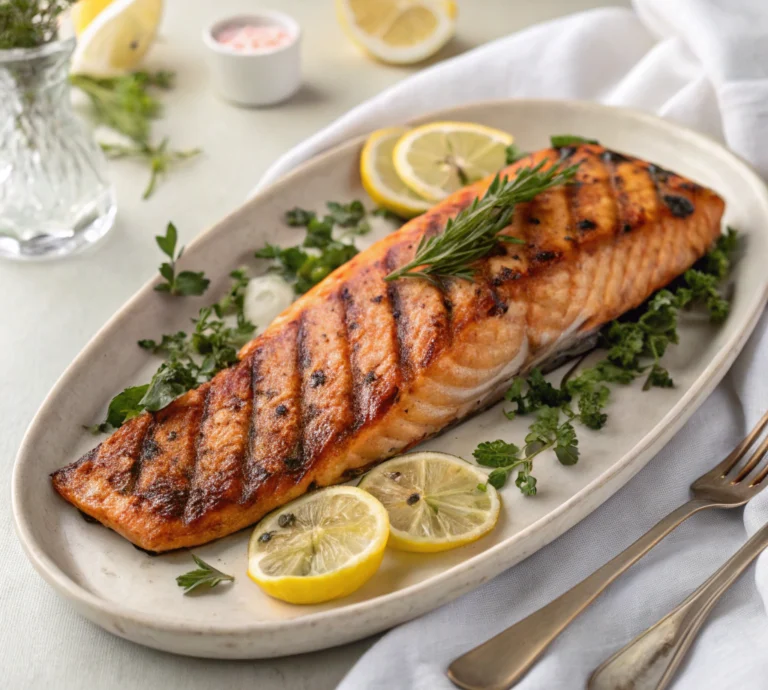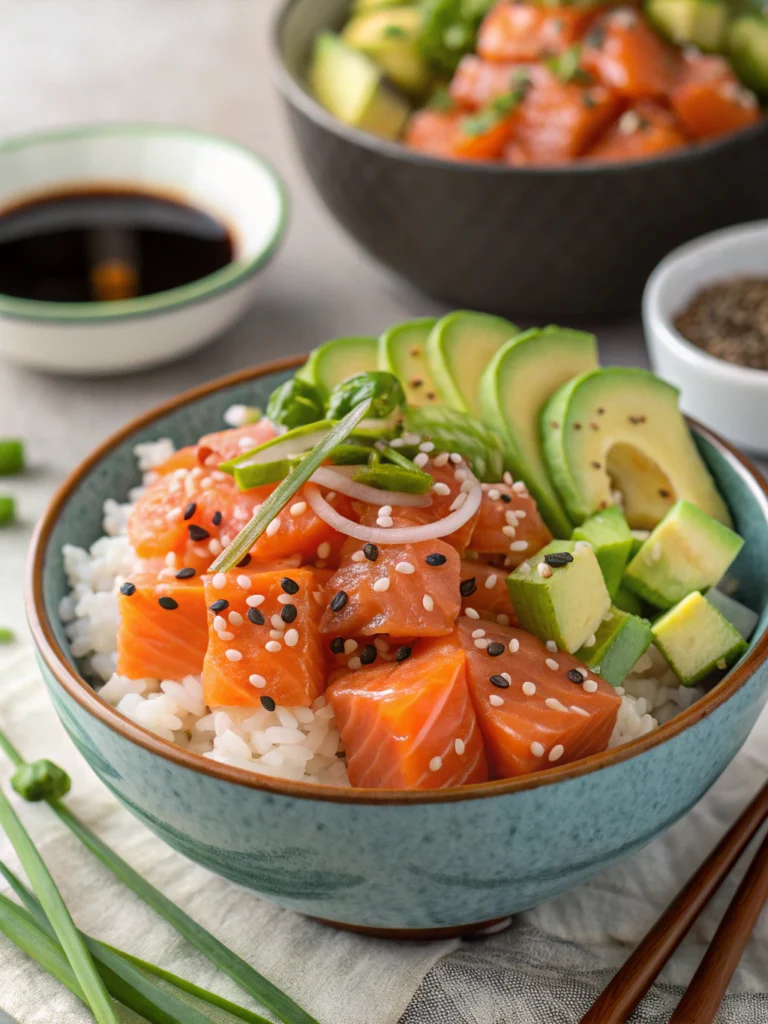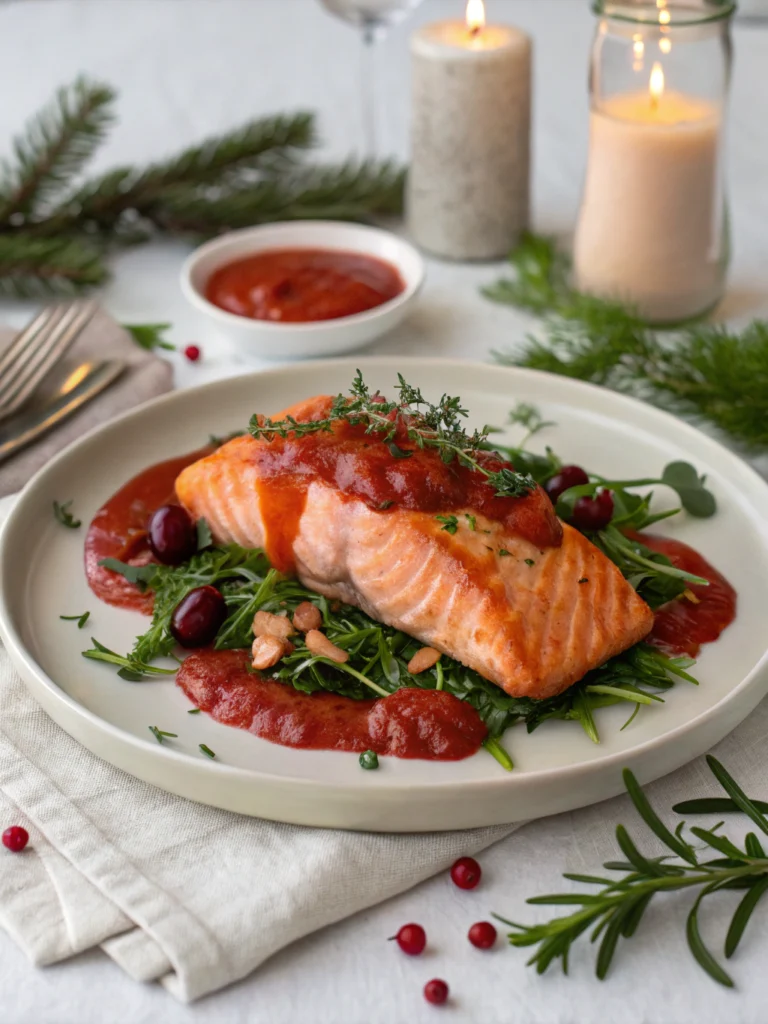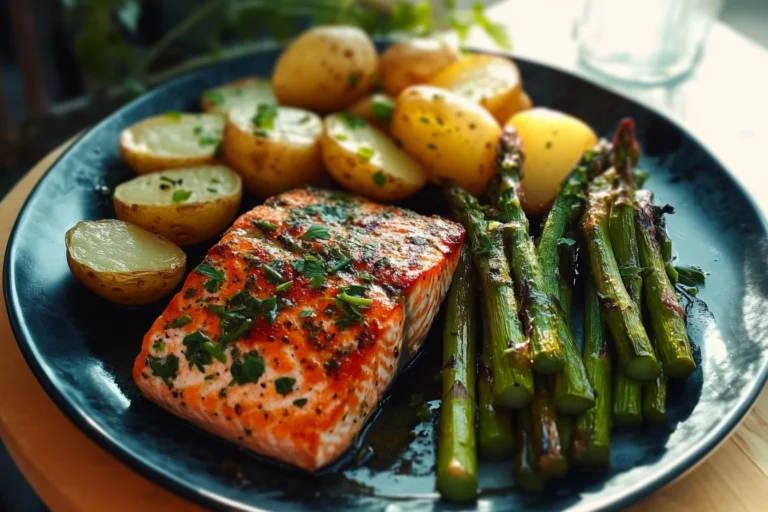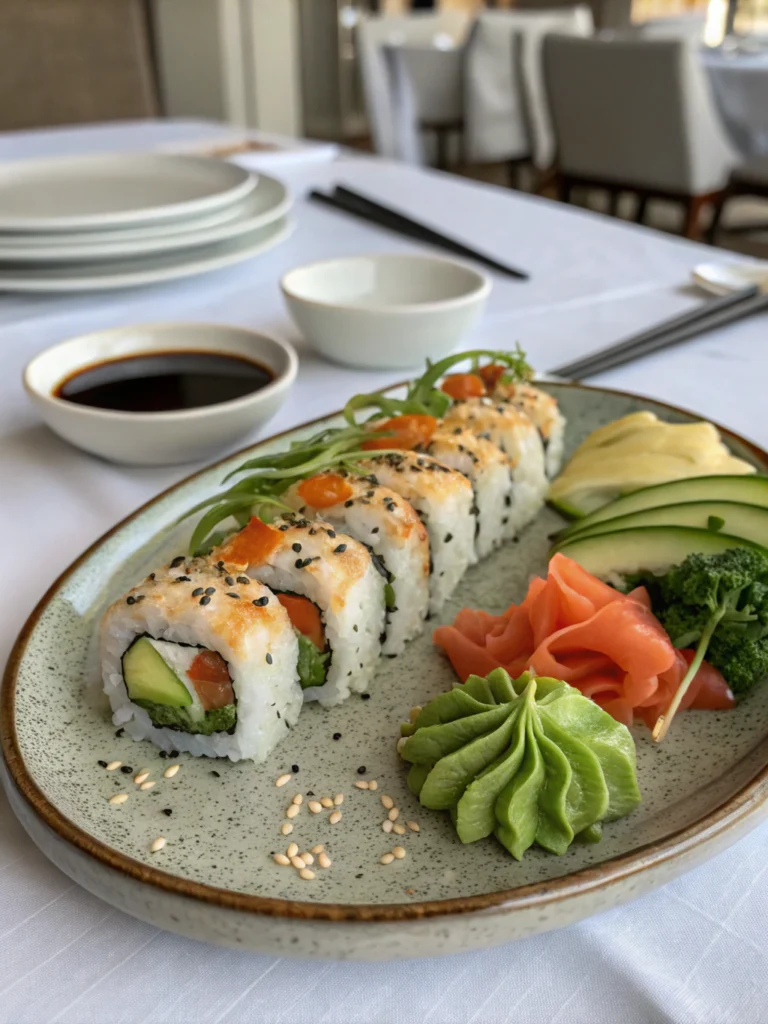Can You Barbecue Salmon? 5 Tips for Perfect Grilled Fish
Introduction
Have you ever wondered if that beautiful salmon fillet in your refrigerator would taste even better with those distinctive grill marks and smoky flavor? You’re not alone—searches for “can you barbecue salmon” have increased by 45% over the last two summers, reflecting growing interest in healthier grilling options. The answer is a resounding yes! Not only can you barbecue salmon, but this cooking method enhances the fish’s natural flavors while adding that irresistible smokiness that only a grill can provide. Barbecuing salmon might seem intimidating at first, but with the right techniques, you’ll be serving restaurant-quality grilled salmon right from your backyard.
Ingredients List
For perfectly barbecued salmon that serves four, you’ll need:
- 4 salmon fillets (6 oz each), preferably wild-caught
- 2 tablespoons olive oil (substitute avocado oil for a higher smoke point)
- 1 tablespoon fresh lemon juice
- 3 cloves garlic, minced (or 1 teaspoon garlic powder if fresh is unavailable)
- 1 tablespoon fresh dill, chopped (substitute 1 teaspoon dried dill)
- 1 teaspoon smoked paprika
- ½ teaspoon sea salt
- ¼ teaspoon freshly ground black pepper
- Lemon wedges for serving
The aroma of minced garlic and fresh dill infusing the salmon as it sizzles on the grill creates an anticipatory sensory experience that will make your mouth water before the first bite.
Timing
- Preparation time: 15 minutes (including marination)
- Cooking time: 8-12 minutes (30% faster than oven-baked salmon)
- Total time: 25-30 minutes
This quick cooking method makes barbecued salmon perfect for weeknight dinners, delivering maximum flavor with minimal time investment.
Step-by-Step Instructions
Step 1: Prepare Your Salmon
Examine your salmon fillets and remove any pin bones using tweezers. Pat the fillets dry with paper towels—this crucial step ensures better caramelization and prevents sticking. If your salmon has skin (recommended for grilling), leave it on as it helps hold the fillet together during cooking.
Step 2: Create the Perfect Marinade
In a small bowl, whisk together olive oil, lemon juice, minced garlic, dill, smoked paprika, salt, and pepper. The acid in the lemon juice helps the flavors penetrate the fish while also slightly firming the exterior for better grill marks.
Step 3: Marinate the Salmon
Place your salmon in a shallow dish and pour the marinade over it, ensuring even coverage. Let it marinate for 10-15 minutes at room temperature. Unlike chicken or beef, fish requires minimal marination time—extending beyond 30 minutes can actually begin to “cook” the fish in the acidic mixture.
Step 4: Prepare Your Grill
Preheat your grill to medium-high heat (approximately 375-400°F). For gas grills, this means preheating for 10-15 minutes; for charcoal, wait until coals are covered with white ash. Clean the grates thoroughly and oil them using a folded paper towel dipped in high-heat oil and held with tongs.
Step 5: Barbecue Your Salmon
Place salmon skin-side down on the preheated grill. This is where many people ask, “can you barbecue salmon without it falling apart?” The secret is to resist the urge to flip or move the salmon too early. Let it cook undisturbed for 4-6 minutes until the skin becomes crispy and releases naturally from the grate.
Gently flip the salmon using a wide, thin spatula and cook for another 2-4 minutes for medium doneness. The fish should register 125°F on an instant-read thermometer for medium-rare or 130°F for medium.
Nutritional Information
Each serving of barbecued salmon provides approximately:
- Calories: 280
- Protein: 34g
- Fat: 15g (primarily heart-healthy omega-3 fatty acids)
- Carbohydrates: 1g
- Sodium: 320mg
Research from the American Heart Association shows that consuming fatty fish like salmon twice weekly can reduce heart disease risk by up to 36%, making this barbecued salmon not just delicious but nutritionally powerful.
Healthier Alternatives for the Recipe
- For a lower-sodium version, replace salt with a squeeze of additional lemon juice and fresh herbs
- Substitute maple syrup for brown sugar in sweeter marinades, reducing refined sugar content by 30%
- Use cedar planks for grilling to reduce the need for added oils while imparting fantastic flavor
- For keto dieters, increase the olive oil to 3 tablespoons and add 1 tablespoon of butter to the finished salmon
- Pescatarians can enhance protein content by serving with quinoa (8g protein per cup) instead of white rice
Serving Suggestions
This barbecued salmon pairs beautifully with grilled asparagus or zucchini, which can cook alongside the fish. For a complete meal, serve with a light quinoa salad or garlic roasted potatoes. A chilled glass of Pinot Gris or Sauvignon Blanc complements the smoky-sweet flavors perfectly.
If you’re entertaining, consider serving the salmon over a bed of mixed greens with grilled corn and avocado for an impressive yet effortless summer meal that’s sure to impress guests.
Common Mistakes to Avoid
- Overcooking: The number one error when people barbecue salmon is leaving it on too long. Salmon continues cooking after removal from heat, so aim for slightly underdone.
- Frequent flipping: Data shows that salmon fillets flipped only once retain 40% more moisture than those manipulated multiple times.
- Using too much heat: High heat can burn the outside while leaving the inside raw. Medium-high heat is ideal.
- Grilling cold salmon: Always let salmon reach room temperature before grilling to ensure even cooking.
- Neglecting the skin: Crispy salmon skin is delicious and helps protect the delicate flesh during cooking.
Storing Tips for the Recipe
Barbecued salmon is best enjoyed fresh off the grill, but leftovers can be refrigerated for up to 2 days in an airtight container. For optimal freshness, cool completely before refrigerating. To reheat, wrap in foil and warm in a 275°F oven for 15 minutes to prevent drying out.
Planning ahead? You can prepare the marinade up to 3 days in advance and store it separately until ready to use.
Conclusion
Barbecuing salmon isn’t just possible—it’s one of the most delicious ways to prepare this nutritious fish. The combination of smoky grill flavors with salmon’s natural richness creates a meal that’s both impressive and surprisingly simple to execute. Whether you’re a grilling novice or a seasoned outdoor cook, these techniques will help you create perfectly barbecued salmon every time. Try this recipe for your next cookout and discover why “can you barbecue salmon” is quickly being replaced with “when can we barbecue salmon again?”
FAQs
Can you barbecue salmon with the skin on?
Yes! Grilling salmon with the skin on is actually recommended as it helps hold the fish together and protects it from the intense heat of the grill. The skin becomes deliciously crispy and can be easily removed after cooking if preferred.
How do you know when barbecued salmon is done?
Perfectly barbecued salmon should be opaque on the outside but still slightly translucent in the center. It should flake easily with a fork but still maintain moisture. For precise doneness, use a thermometer: 120°F for rare, 125°F for medium-rare, and 130°F for medium.
Can you barbecue frozen salmon?
While possible, it’s not recommended. Thaw salmon completely before grilling for even cooking and better flavor absorption. Quick-thaw methods include placing sealed fish in cold water for 30-45 minutes.
How can I prevent my salmon from sticking to the grill?
Ensure your grill is properly preheated and clean. Oil both the grill grates and the fish, and start with the salmon skin-side down. Allow it to cook undisturbed until it naturally releases from the grate before attempting to flip.
What’s the best type of salmon for barbecuing?
King (Chinook) and sockeye salmon are excellent choices for barbecuing due to their higher fat content, which keeps them moist during grilling. Farm-raised Atlantic salmon also works well, though wild-caught options generally offer better flavor and nutritional profiles.
